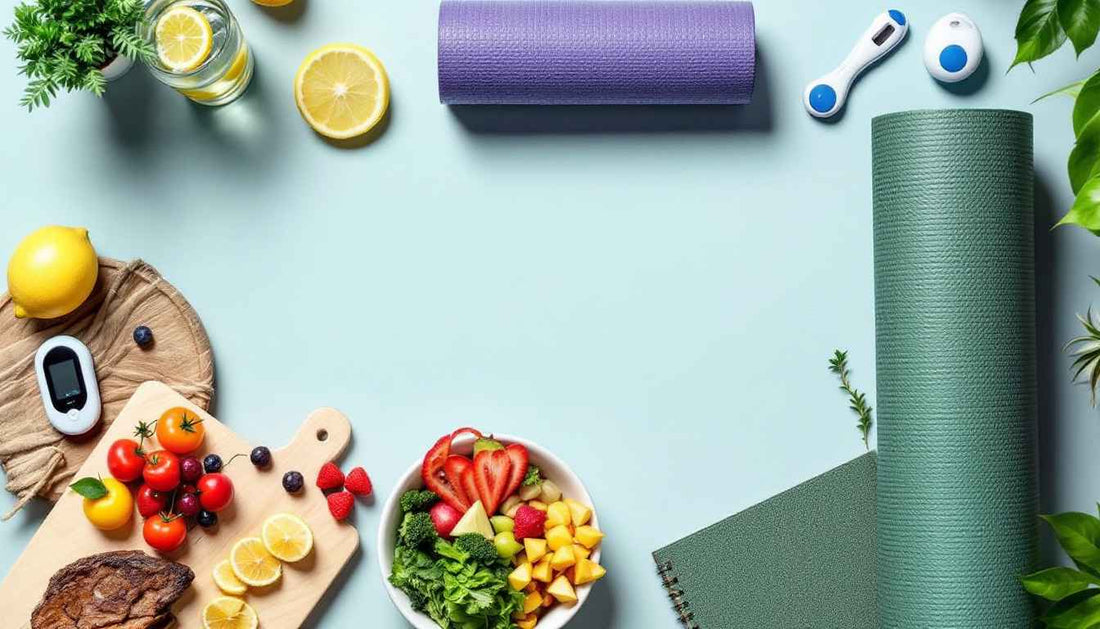
Small Lifestyle Tweaks That Make a Big Difference in Pain Relief
Share
Chronic pain doesn't always require drastic measures. In fact, small daily changes in how you eat, move, sleep, and manage stress can reduce pain dramatically. The secret lies in consistency. With science-backed micro-habits, you can tip the scales in favor of healing and comfort. This guide reveals the most effective lifestyle tweaks that can transform your pain management journey—without requiring major overhauls.
1. Start the Day with Anti-Inflammatory Hydration
A glass of warm lemon water with turmeric or ginger can set the tone for a pain-fighting day. Hydration is critical for cellular repair, joint lubrication, and inflammation control.
Why it works:
- Dehydration increases sensitivity to pain.
- Lemon boosts digestion and detoxification.
- Turmeric has strong anti-inflammatory compounds like curcumin.
Tip:
Add a pinch of black pepper to improve curcumin absorption.
2. Master Gentle Morning Movement
Stretching or mobility drills within 20 minutes of waking up gets blood flowing to stiff joints and muscles. Simple yoga, foam rolling, or bodyweight exercises can ease morning stiffness.
Why it works:
- Increases synovial fluid in joints
- Reduces cortisol buildup overnight
- Improves posture and alignment
Try This:
- 5-minute foam rolling
- Cat-cow stretches
- Dynamic leg swings
3. Eat for Anti-Inflammatory Balance
You don’t need to be perfect. Just start swapping out inflammation-triggering foods for healing ones.
Eat more of:
- Omega-3 fats (salmon, chia seeds)
- Leafy greens and cruciferous veggies
- Berries and citrus fruits
Limit or avoid:
- Processed sugar
- Vegetable oils (canola, soybean)
- Excessive dairy and red meat
Pro Tip:
Follow the 80/20 rule—eat clean 80% of the time.
4. Upgrade Your Workstation Posture
Poor posture is a silent pain multiplier. Whether you work at a desk or stand all day, posture tweaks can relieve pressure on your neck, shoulders, and lower back.
Simple Fixes:
- Raise your screen to eye level
- Use lumbar support
- Keep feet flat on the floor
Bonus:
Try a sit-stand desk or timer to change positions every 30–45 minutes.
5. Add Micromovements Throughout Your Day
Sitting or standing too long causes tightness and stagnation. Sneak in 2–5 minute movement breaks every hour.
Options:
- March in place
- Do shoulder circles
- Stretch your hamstrings
Why it works:
- Improves blood flow
- Rehydrates fascia
- Prevents muscle cramps
6. Practice Breathing to Reset Your Nervous System
Pain and stress feed each other. Deep breathing can break the cycle by shifting your body from “fight-or-flight” into healing mode.
Try This Simple Breathing Hack:
- Inhale for 4 seconds
- Hold for 4 seconds
- Exhale for 6 seconds
- Repeat 5 times, 3x daily
7. Create a Wind-Down Ritual to Improve Sleep
Poor sleep amplifies pain. The best way to improve sleep is to give your body signals that it's time to relax.
Effective Sleep Rituals:
- Shut off screens 1 hour before bed
- Use lavender essential oil or magnesium spray
- Read or journal
Why it works:
- Reduces cortisol
- Increases melatonin
- Supports nighttime tissue repair
8. Track and Eliminate Hidden Pain Triggers
Many lifestyle factors like food sensitivities, allergens, or poor air quality worsen chronic pain. Keeping a daily pain journal can help you identify patterns.
Track These:
- Food intake
- Sleep hours
- Physical activity
- Stress levels
Then: Make small adjustments based on what you find.
9. Use Wearable Recovery Tools
Wearable tech and tools can speed recovery with minimal effort.
Top Picks:
- TENS units for nerve pain
- Smart heating pads for stiffness
- Cold compression sleeves for inflammation
Check out our Top Wearable Devices for Pain-Free Living in 2025 for product comparisons and recommendations.
10. Rethink Your Footwear
Pain often starts from the ground up. The wrong shoes can misalign your spine, knees, and hips.
Look for Shoes With:
- Arch support
- Cushioned soles
- Proper fit for your gait type
You may also consider orthotic inserts or minimalist shoes depending on your needs.
Internal Links
- Explore The Role of Sleep in Healing Chronic Pain
- Discover Breathing Techniques That Melt Away Tension and Pain
- Learn How Stress Triggers Pain (And Hacks to Break the Cycle)
FAQ – People Also Ask
Q: What is the most effective lifestyle change for chronic pain?
A: Regular movement, anti-inflammatory eating, and good sleep hygiene are three of the most effective changes.
Q: Can daily habits really reduce chronic pain?
A: Yes. Science shows that small, consistent changes can downregulate inflammation and pain sensitivity over time.
Q: What should I avoid to reduce pain naturally?
A: Avoid processed foods, sedentary behavior, poor sleep, and unmanaged stress.
Final Thoughts: Small Steps, Big Results
You don’t need a complete lifestyle overhaul to feel better. Start with one or two of these pain-fighting tweaks and build from there. The key is to stay consistent and listen to your body.
CTA: 👉 Want a complete daily checklist for pain-free living? Download our free Pain-Free Habits Blueprint and take control of your health—one small tweak at a time.
